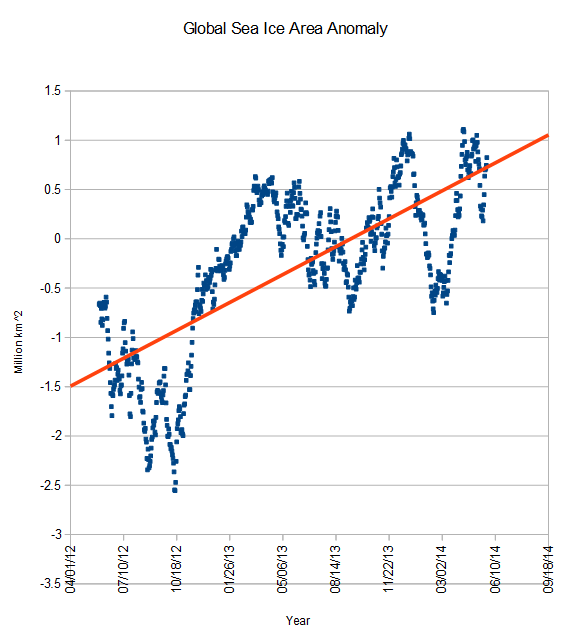 arctic.atmos.uiuc.edu/cryosphere/timeseries.global.anom.1979-2008
arctic.atmos.uiuc.edu/cryosphere/timeseries.global.anom.1979-2008
Disrupting the Borg is expensive and time consuming!
Google Search
-
Recent Posts
- Fact Checking NASA
- Fact Checking Grok
- Fact Checking The New York Times
- New Visitech Features
- Ice-Free Arctic By 2014
- Debt-Free US Treasury Forecast
- Analyzing Big City Crime (Part 2)
- Analyzing Big City Crime
- UK Migration Caused By Global Warming
- Climate Attribution In Greece
- “Brown: ’50 days to save world'”
- The Catastrophic Influence of Bovine Methane Emissions on Extraterrestrial Climate Patterns
- Posting On X
- Seventeen Years Of Fun
- The Importance Of Good Tools
- Temperature Shifts At Blue Hill, MA
- CO2²
- Time Of Observation Bias
- Climate Scamming For Profit
- Climate Scamming For Profit
- Back To The Future
- “records going back to 1961”
- Analyzing Rainfall At Asheville
- Historical Weather Analysis With Visitech
- “American Summers Are Starting to Feel Like Winter”
Recent Comments
- Bob G on Fact Checking NASA
- Ohio Cyclist on Fact Checking NASA
- Bob G on Fact Checking NASA
- Bob G on Fact Checking NASA
- Bob G on Fact Checking NASA
- Bob G on Fact Checking NASA
- arn on Fact Checking NASA
- Gordon Vigurs on Fact Checking NASA
- Bob G on Fact Checking NASA
- Bob G on Fact Checking NASA


That graph is a real winner Steven. Definitely worth bookmarking.
Oh Reggie … how about a little blow torch fireworks to celebrate the ice recovery??
+1
What are the implications of this? Can you speak about this in he context of climate change/ global warming, etc?
Thanks.
It has nothing to do with climate change or global warming.
We had three days of warm weather up here in upstate NY and now it is back into the ice box again with temperatures barely scraping above freezing at night.
I keep saying, the key to the weather is how cold it is in summer in the ‘Ice Age Glacier Belt’ of North America.
No way. Sydney is the canary in the climate change coal mine. 22 degrees Celsius is confirmation of the end of the world according to Alarmists at the SMH and UNSW. Sydney is a well known UHI free zone.
http://m.smh.com.au/environment/weather/record-may-warm-spell-tipped-to-go-for-another-week-20140525-38wkn.html
Meanwhile it is down to 2 degrees C at night a stones throw away in Canberra.
http://www.bom.gov.au/act/forecasts/canberra.shtml
Some say both are evidence of catastrophic climate variability and that we are doomed.
49 here in Saratoga right now
It is 63.6 °F here in mid NC right now. Maggie Valley, NC is 56.3 °F
I frequently turn the butter warmer up in my fridge to keep the house warm and comfy here in Upstate NY
56º here in central NJ. Expected ( not really expected ) high of 63.
A good 10º cooler than average.
I tell people my refrigerator turns on around October 30th here. 🙂
Reblogged this on Climatism.
Have you seen this article?
http://phys.org/news/2014-05-antarctic-ice-sheet-unstable-age.html
The findings:
1. Antarctic ice starting melting 5000 years earlier than previously thought (to about 20000 years ago)
2. Its melting wasn’t slow and steady, there are periods of fast melts followed by pauses. The last big melting phase was 9000 years ago.
3. It causes sea level rise of 50 feet in 350 years, or 20 times faster than the last century.
Looks like Mother Nature is fully capable of achieving much more warming of the south pole all on her own without any help from SUVs.
And that’s a lot of Manhattans.
Pity that most of the glaciers are melting rapidly, and that the land ice on Antarctica and Greenland is melting as well. But that happened many times before, so it’s normal.
“most of the glaciers are melting rapidly” depends on your point of reference and is one of the underhanded methods used by the con artists to scare the Sheeple.
I suggest you look at North Hemisphere Summer Energy the Leading Indicator which has been DECLINING in the sesond half of the Holocene as we approach a possible glacial inception.
Or read these peer-reviewed papers:
A more recent paper looking at glaciers in Norway.
The authors of BOTH papers simply state that most glaciers likely didn’t exist 6,000 years ago, but the highest period of the glacial activity has been in the past 600 years. This is hardly surprising with ~9% less solar energy.
Correct. Glaciers grew after the end of the Medieval Warm Period. This is why the fake climatologists had to get rid of that irritating fact. Not to mention, the Little Ice Age which is now being hailed as ‘normal weather’ instead.
But it will start decreasing again soon, so this statement actually means very little. You need to say why it is important also.
Andy
Better yet, why don’t you explain why the largest known variation has remained less then a percent of the total throughout the known period of the interglacial.
I got your interglacial right here, and it’s flat enough to play billiards on:
http://www.hyzercreek.com/hockey5j.jpg
Funny how “climate change” appears to be nothing but orbital variation to everyone except liberal Democrats, fake Christians, Hollywood actors, European socialists, self-hating royalty figures, ne’er-do-wells, and twenty something year old bloggers living their mom’s basement with their Star Trek toys